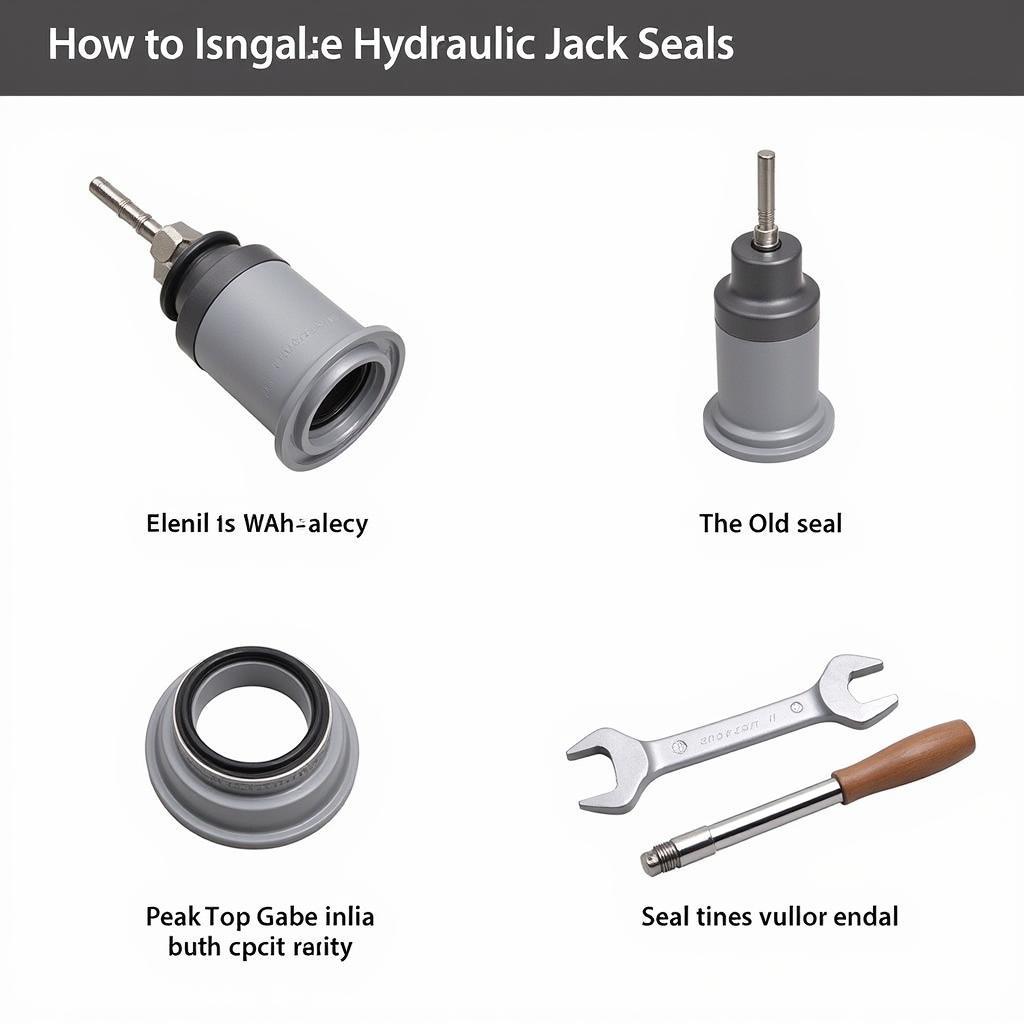Knowing how to fix a car jack is essential for any car owner or mechanic. A malfunctioning jack can be dangerous, leading to potential injuries or vehicle damage. This guide will walk you through common car jack problems and provide step-by-step instructions on how to fix them, ensuring your safety and the longevity of your equipment.
Common Car Jack Problems and Solutions
Car jacks, like any other tool, can experience wear and tear over time. Understanding the typical issues can save you time and frustration. Here are some of the most frequent problems you might encounter:
- Leaking Hydraulic Fluid: A hydraulic jack relies on fluid to function correctly. If you notice fluid leaking, it’s a sign of a compromised seal.
- Bent or Damaged Frame: A bent frame can compromise the jack’s stability, making it unsafe to use.
- Sticky or Stiff Mechanism: A jack that’s difficult to raise or lower could have rusted or dried-out parts.
- Broken Release Valve: A faulty release valve can make it impossible to lower the car safely.
- Worn-out Saddle: The saddle is the part of the jack that contacts the car’s lifting point. If it’s worn, it can slip or damage the vehicle.
How to Fix a Leaking Hydraulic Jack
A leaking hydraulic jack is a common problem, often caused by worn-out seals. Here’s a step-by-step guide to fixing it:
- Gather your supplies: You’ll need a new hydraulic jack seal kit (specific to your jack model), hydraulic jack oil, a wrench set, and a drain pan.
- Place the jack on a level surface: Ensure the jack is fully lowered before starting.
- Drain the old hydraulic fluid: Open the release valve and collect the old fluid in the drain pan.
- Disassemble the jack: Carefully follow the manufacturer’s instructions to disassemble the jack and access the seals.
- Replace the seals: Install the new seals from the seal kit, ensuring they are properly seated.
- Reassemble the jack: Put the jack back together, following the manufacturer’s instructions.
- Fill with new hydraulic fluid: Use the correct type and amount of hydraulic fluid specified for your jack model.
- Test the jack: Raise and lower the jack a few times to check for leaks and smooth operation.
 Replacing Hydraulic Jack Seals
Replacing Hydraulic Jack Seals
How to Address a Sticky Jack Mechanism
A stiff or sticky jack can be frustrating and potentially dangerous. Here’s how to fix it:
- Clean the jack: Remove any dirt, grease, or debris that might be hindering the mechanism.
- Lubricate the moving parts: Apply a suitable lubricant, such as white lithium grease, to the jack’s moving parts.
- Work the mechanism: Raise and lower the jack several times to distribute the lubricant.
Maintaining Your Car Jack
Regular maintenance can prevent many common car jack problems. Here are some tips:
- Clean your jack after each use: Remove dirt and debris to prevent corrosion and sticking.
- Store your jack properly: Store the jack in a dry, clean place to prevent rust and damage.
- Inspect your jack regularly: Check for leaks, damage, or any signs of wear and tear.
Conclusion
Knowing how to fix a car jack is crucial for safe and efficient vehicle maintenance. By following the steps outlined in this guide, you can address common issues and ensure your jack remains in good working condition. Regular maintenance is key to preventing problems and extending the lifespan of your jack. Remember, a properly functioning car jack is essential for your safety and the well-being of your vehicle. For further assistance or if you encounter more complex issues, don’t hesitate to contact AutoTipPro at +1 (641) 206-8880 or visit our office at 500 N St Mary’s St, San Antonio, TX 78205, United States.
Expert Insight: “A small investment in maintenance can save you a lot of trouble down the road,” says John Davis, Senior Automotive Technician at Autotippro. “Regularly inspecting and lubricating your car jack can prevent many common problems.”
Expert Insight: “Always prioritize safety when working with car jacks,” advises Maria Sanchez, Lead Mechanic at Autotippro. “Ensure the jack is placed on a stable surface and the vehicle is properly secured before lifting.”
FAQ
- What type of hydraulic fluid should I use in my car jack? Consult your owner’s manual for the recommended hydraulic fluid type.
- Can I repair a bent car jack frame? It’s generally not recommended to repair a bent frame. Replace the jack for safety.
- How often should I lubricate my car jack? Lubricate the moving parts every few months or after each use in harsh conditions.
- Where can I find replacement parts for my car jack? Auto parts stores or online retailers typically carry car jack replacement parts.
- What should I do if my car jack fails while lifting a car? Immediately try to stabilize the car with jack stands or other supports. If you are unsure how to do this safely, call for professional assistance.
- How can I tell if my car jack is worn out? Look for signs of rust, leaks, bent parts, or difficulty in raising and lowering.
- Is it safe to use a car jack on an uneven surface? Never use a car jack on an uneven surface. This can cause the jack to tip and the vehicle to fall. Always use the jack on a level, stable surface.




Leave a Reply